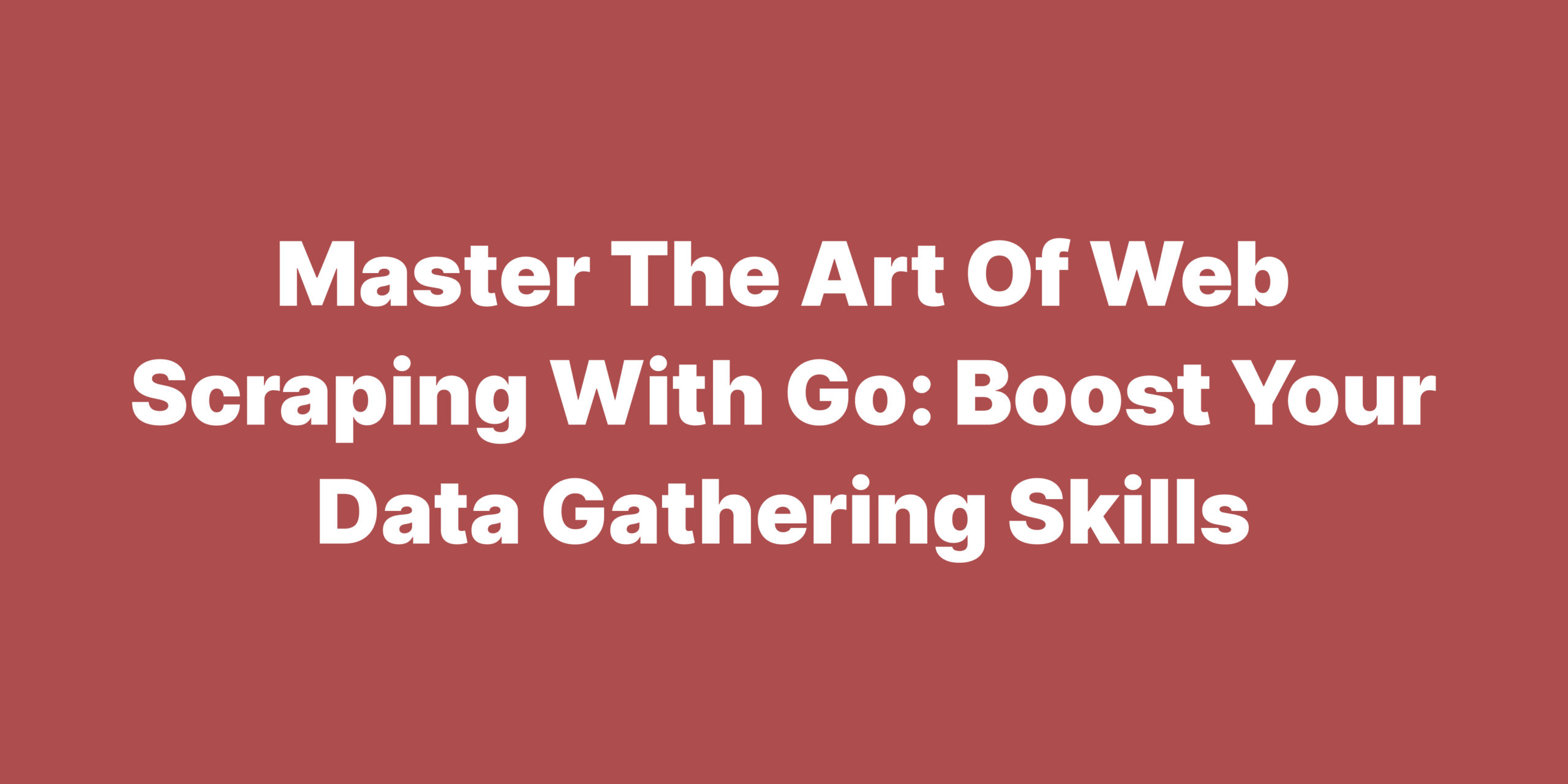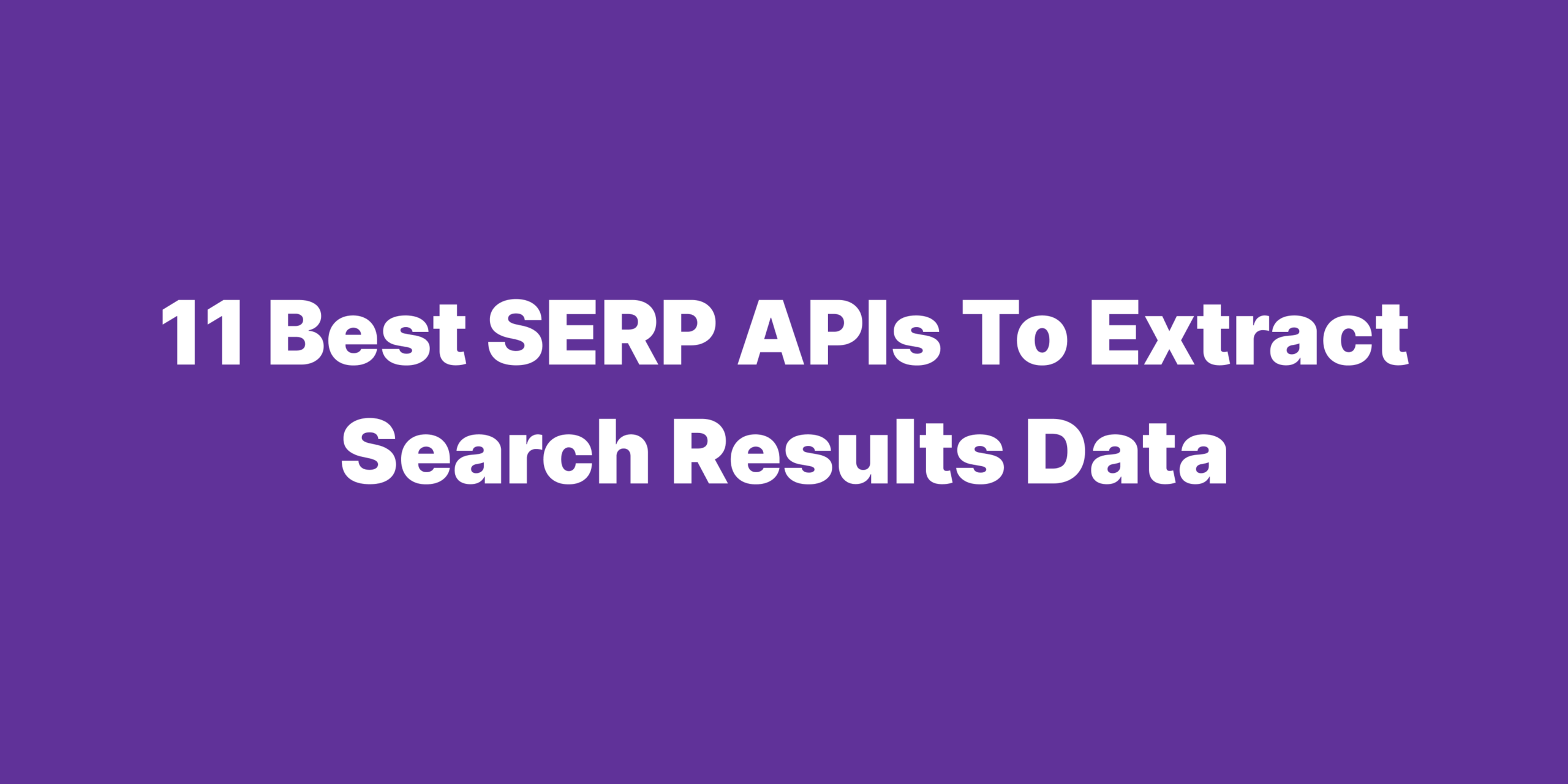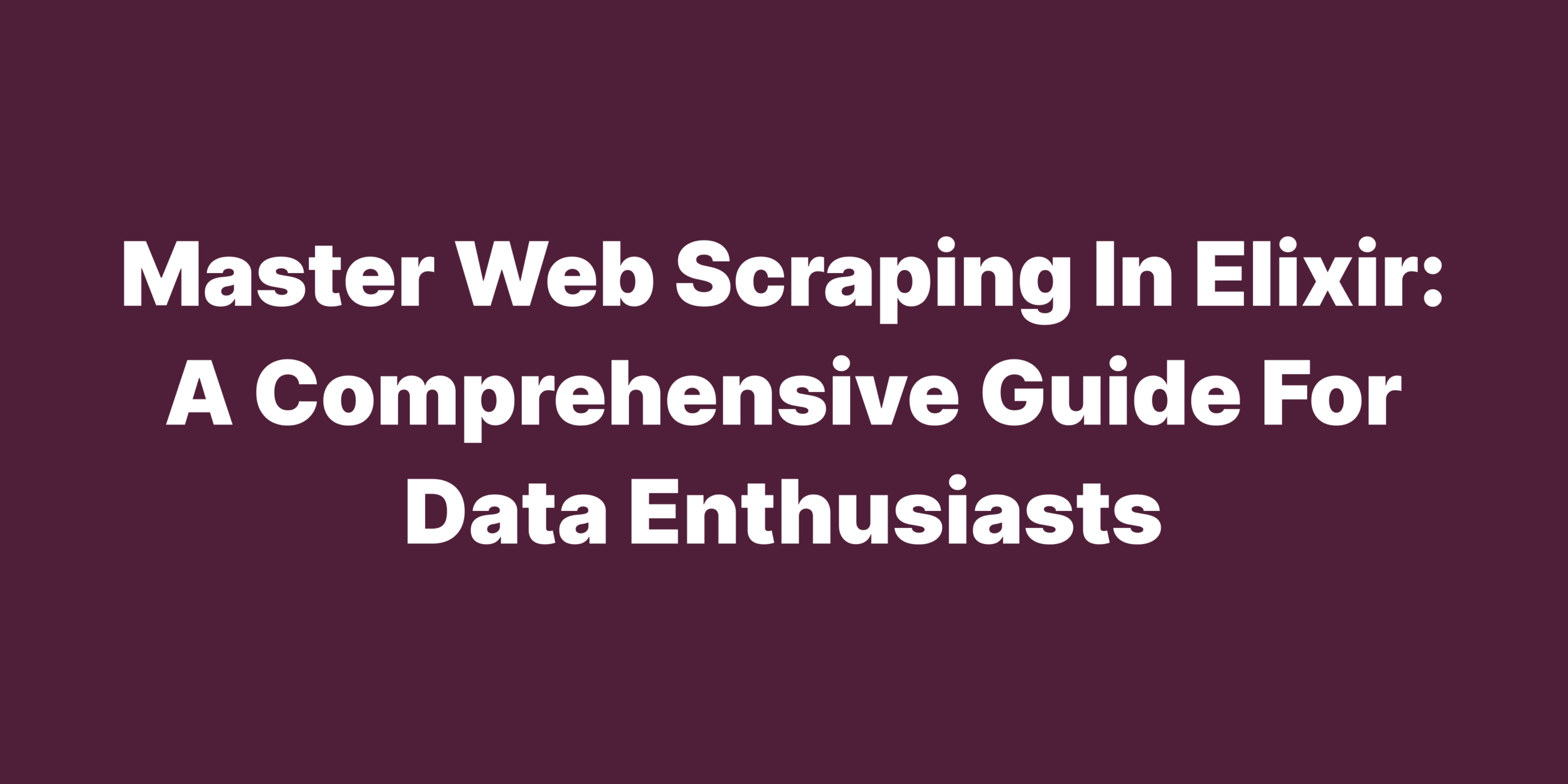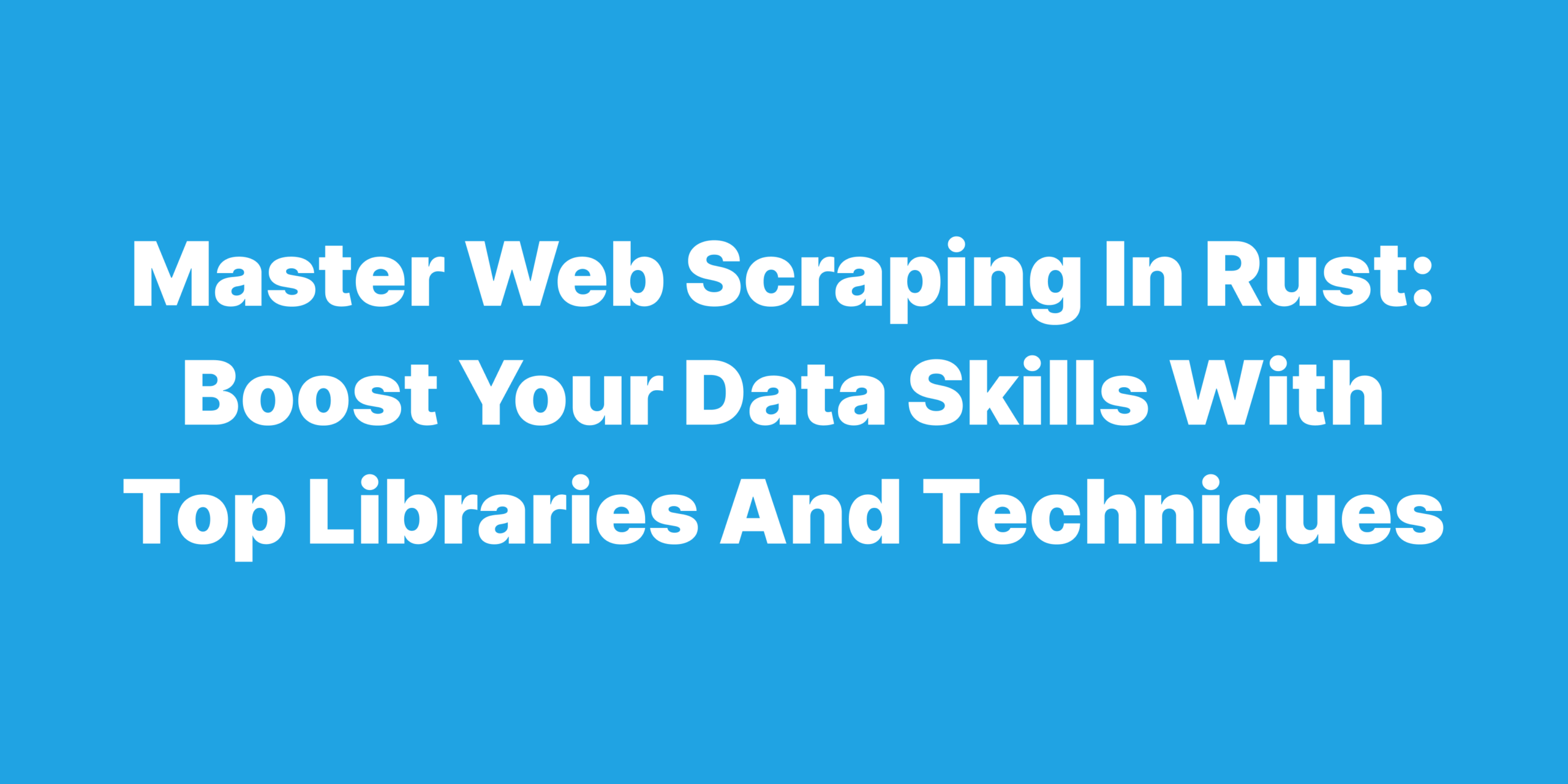Web scraping is a powerful technique that allows data enthusiasts to extract valuable information from websites and use it for further analysis. It plays a crucial role in data analysis by providing access to large volumes of data from various sources, which can then be processed and transformed into actionable insights. For those looking to enhance their web scraping projects, incorporating a web scraping API can provide a significant advantage by offering robust and scalable solutions tailored for efficient data extraction. This article will introduce you to the world of web scraping in Go, a versatile language for web scraping tasks. We will explore how to identify HTML objects by ID, delve into the top five libraries for web scraping in Go, and guide you through building your web scraper. Furthermore, we will discuss parsing HTML code with Go libraries, enabling you to harness the full potential of web scraping and take your data analysis skills to new heights.
Unleashing the Power of Web Scraping with Go
Go, also known as Golang, is an open-source programming language developed by Google that has gained popularity for its simplicity, efficiency, and strong support for concurrent programming. As a web scraping language, Go offers an ideal combination of performance, ease of use, and a robust ecosystem of libraries and tools, making it a top choice for web scraping projects.
Before diving into web scraping with Go, you’ll need to set up your development environment. This includes installing the Go programming language and setting up your text editor or integrated development environment (IDE) to support Go code. Additionally, you may need to install specific libraries or packages related to web scraping, such as HTTP clients and HTML parsers. By having the right tools and libraries in place, you’ll be ready to start scraping websites effectively and efficiently.
Now that you have your environment set up, it’s time to explore some basic web scraping concepts. Web scraping involves sending HTTP requests to websites, downloading the HTML content, and extracting the desired information from the HTML code. To achieve this, you will need to understand the structure of the target website and identify the HTML elements containing the data you’re interested in. With a solid grasp of these basic concepts, you’ll be well on your way to mastering web scraping in Go and unlocking the wealth of information available on the web.
Mastering the Art of Locating HTML Objects in Go
HTML objects, or elements, are the building blocks of web pages and form the underlying structure of the content displayed on a website. When web scraping, it’s essential to identify the specific HTML objects containing the data you want to extract. By pinpointing these objects, you can efficiently navigate the HTML code and retrieve the desired information, making the process of web scraping more accurate and streamlined.
In Go, you can identify HTML objects by their ID attribute, which is a unique identifier for an element within a web page. To achieve this, you will typically use an HTML parser library, such as “goquery” or “colly,” which allows you to traverse and manipulate HTML documents with ease. By utilizing the library’s functions, you can find HTML objects by their ID and access their content, attributes, or even their child elements.
For example, let’s say you want to extract the title of a blog post from a web page with the following HTML structure:
<article id="blog-post">
<h1>Title of the Blog Post</h1>
<p>Content of the blog post...</p>
</article>
Using a library like “goquery,” you could write Go code to find the “blog-post” element by its ID, and then access the content of the h1 tag to retrieve the blog post title. By learning how to identify HTML objects by ID in Go, you’ll have a powerful tool in your web scraping arsenal, enabling you to extract specific data with precision and ease.
Discover the Top 5 Libraries for Web Scraping in Go
The Go programming language boasts a vibrant ecosystem of libraries that cater to web scraping needs, making it easier than ever to access, process, and analyze web data. These libraries offer a range of functionality, from handling HTTP requests and parsing HTML documents to providing a more comprehensive scraping framework with advanced features such as concurrent requests and error handling. By understanding the capabilities of each library and choosing the one that best fits your project requirements, you can streamline your web scraping efforts and achieve outstanding results in Go.
Comparing the Top Libraries for Web Scraping in Go
Colly
Pros:
- Lightweight and fast, providing excellent performance for web scraping tasks.
- Easy-to-use API, making it beginner-friendly.
- Robust support for parallelism and concurrency, allowing you to scrape multiple pages simultaneously.
Cons:
- Lacks built-in support for JavaScript rendering, which may be required for scraping dynamic websites.
- Limited documentation and community support compared to some other libraries.
- May require additional configuration for handling cookies and sessions.
Goquery
Pros:
- Provides a jQuery-like syntax, making it familiar and easy to use for developers with web development experience.
- Efficient and powerful HTML parsing capabilities.
- Actively maintained and well-documented, offering a reliable option for long-term projects.
Cons:
- Focused primarily on HTML parsing, requiring additional libraries for handling HTTP requests and other web scraping tasks.
- No built-in support for JavaScript rendering.
- May have a steeper learning curve for developers without prior jQuery experience.
Go-Colly/ChromeDP
Pros:
- Built on top of Colly, providing all the benefits of the Colly library.
- Offers built-in support for JavaScript rendering through the Chrome DevTools Protocol, enabling you to scrape dynamic websites.
- Flexible and extensible, allowing you to customize the library to meet your specific needs.
Cons:
- Requires a running instance of Chrome or a compatible browser, which may increase resource consumption.
- More complex than some other libraries, potentially making it harder to get started.
- Limited documentation compared to other, more established libraries.
Net/HTML
Pros:
- Part of the Go standard library, ensuring stability and wide compatibility.
- Provides low-level access to HTML parsing, allowing for fine-grained control.
- Excellent performance and resource management due to its integration with Go’s core.
Cons:
- Lacks the user-friendly API and convenience features found in more specialized libraries.
- Requires additional libraries for handling HTTP requests and other web scraping tasks.
- Can be more difficult to use for developers without a deep understanding of HTML and Go’s standard library.
Golang.org/x/net/html/charset
Pros:
- Another library that is part of the Go standard library, ensuring reliability and compatibility.
- Useful for handling character encoding issues when scraping web pages with different character sets.
- Lightweight and efficient, focusing solely on character encoding detection and conversion.
Cons:
- Limited in scope, addressing only character encoding issues and requiring additional libraries for other web scraping tasks.
- Lacks the convenience features and user-friendly API found in specialized libraries.
- May be unnecessary for projects that do not encounter character encoding issues during web scraping.
Crafting Your Own Web Scraper with Go
Building a web scraper in Go involves combining the power of various libraries and tools to fetch, parse, and extract data from websites. Go’s robust ecosystem and performance-oriented design make it a perfect choice for developing efficient and effective web scrapers that cater to your specific needs.
The first step in building a web scraper in Go is to select the appropriate libraries for your project. This typically involves choosing an HTTP client for sending requests and receiving responses, as well as an HTML parsing library for navigating and manipulating the HTML content. Once you have identified the necessary libraries, you can begin writing your Go code to fetch web pages, parse the HTML, and extract the data you need.
For example, using the “colly” library, you could create a simple web scraper that extracts the titles of articles from a blog:
package main
import (
"fmt"
"github.com/gocolly/colly"
)
func main() {
c := colly.NewCollector()
c.OnHTML("article h1", func(e *colly.HTMLElement) {
fmt.Println(e.Text)
})
err := c.Visit("https://example.com/blog")
if err != nil {
fmt.Println("Error:", err)
}
}
In this example, we create a new Colly collector, specify a callback function that will be called for each h1 element within an article element, and then visit a blog page. The callback function simply prints the text content of the h1 element, which represents the article title. With just a few lines of Go code, you can build a powerful web scraper capable of extracting valuable information from websites with ease.
Unraveling HTML Code with Go Libraries
Parsing HTML code is the process of analyzing the structure and content of an HTML document to extract specific information. In the context of web scraping, parsing HTML code is essential for navigating through the various elements and retrieving the desired data. By understanding how to parse HTML code effectively, you can ensure your web scraper is accurate, efficient, and reliable.
Go offers several libraries specifically designed for parsing HTML code, such as “goquery” and “net/html.” These libraries provide powerful and efficient tools to traverse and manipulate HTML documents, enabling you to locate and extract the information you need quickly. By leveraging these libraries, you can turn raw HTML content into structured data that can be processed and analyzed further.
For instance, using the “goquery” library, you can parse an HTML document and extract all the links within it:
package main
import (
"fmt"
"log"
"net/http"
"github.com/PuerkitoBio/goquery"
)
func main() {
resp, err := http.Get("https://example.com")
if err != nil {
log.Fatal(err)
}
defer resp.Body.Close()
doc, err := goquery.NewDocumentFromReader(resp.Body)
if err != nil {
log.Fatal(err)
}
doc.Find("a").Each(func(_ int, s *goquery.Selection) {
href, _ := s.Attr("href")
fmt.Println(href)
})
}
In this example, we use the standard “net/http” library to fetch the HTML content of a web page and then pass the response body to the “goquery” library. We then use the “Find” method to locate all a elements and iterate over them with the “Each” method, printing the “href” attribute of each link. This example demonstrates how Go libraries can make parsing HTML code a breeze, allowing you to focus on extracting and processing the data you need.
Elevate Your Data Analysis with Web Scraping in Go
In conclusion, web scraping in Go offers a powerful and efficient way to gather valuable information from the vast resources of the internet. Throughout this article, we explored the basics of web scraping, identified HTML objects, compared the top libraries, and demonstrated how to build a web scraper and parse HTML code using Go libraries. The importance of web scraping in data analysis cannot be overstated, as it unlocks new insights and helps drive better decision-making. With the skills and knowledge you’ve gained, you’re now ready to explore the endless possibilities of web scraping in Go. If you want to jump-start your web scraping journey, try Scrape Network for free! We handle all the proxies, captchas, and ensure you don’t get blocked, letting you focus on extracting the data you need.
Frequently Asked Questions
Which aspects should be taken into account when selecting a Go library for web scraping?
When choosing a Go library for web scraping, consider factors such as ease of use, performance, documentation, community support, and specific features (e.g., JavaScript rendering or concurrent requests). It’s essential to select a library that best aligns with your project requirements and your level of expertise.
What distinguishes the top 5 Go libraries for web scraping from each other?
The key differences among the top 5 Go libraries for web scraping lie in their focus, functionality, and ease of use. Some libraries, like Colly and Goquery, offer user-friendly APIs and a wide range of features, while others, like Net/HTML and Golang.org/x/net/html/charset, are part of the Go standard library and focus on specific tasks. Each library has its pros and cons, so it’s crucial to understand their unique offerings and select the one best suited to your needs.
What’s the best way to stay informed about the latest advancements in web scraping libraries and best practices?
To stay updated on the latest developments in web scraping libraries and best practices, follow relevant blogs, forums, and social media channels dedicated to web scraping, Go programming, and data analysis. Joining community groups, attending webinars or conferences, and subscribing to newsletters can also help you stay informed about new libraries, updates, and industry trends.
How can using Scrape Network’s Scraping API benefit my web scraping projects? (Be sure to give a call to action to signup for 5,000 free API calls)
Leveraging Scrape Network’s Scraping API can significantly simplify and streamline your web scraping projects. Scrape Network takes care of proxies, captchas, and ensures you don’t get blocked, allowing you to focus on extracting and processing the data you need. Furthermore, Scrape Network’s API is easy to integrate into your existing projects, providing a powerful and efficient solution for your web scraping needs. Sign up today to receive 5,000 free API calls and experience the benefits of Scrape Network firsthand!






